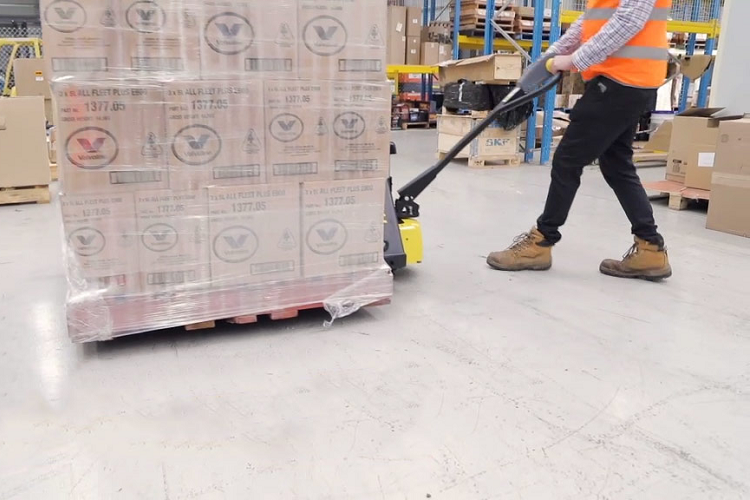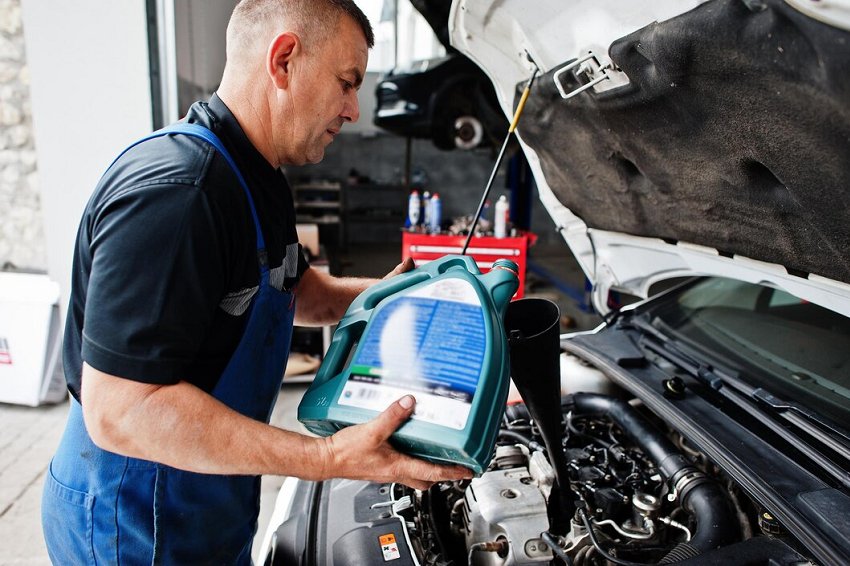Are you weary of sudden breakdowns and costly repairs? Using our comprehensive car maintenance checklist, you can maintain your vehicle’s faultless operation and avoid unwarranted problems. Whether you are an experienced mechanic or a novice driver, this guide contains all the information necessary to keep your vehicle in pristine condition.
Why is car maintenance obligatory?
Maintaining the health of your vehicle is critical to ensuring that it will continue to perform as expected and last for as long as possible.
Fortunately, routine car maintenance is neither difficult nor costly. This guide will introduce you to the fundamentals of automobile maintenance so that you can keep your vehicle in pristine condition.
- My most important advice for your engine oil is that checking engine oil is very essential and never do any negligence in case of any replacement.
- The air filter has to be checked, and if it is unclean, it needs to be changed or changed.
- These two steps are straightforward and simple to complete on your own.
- An important component of car maintenance has the right tires for your vehicle.
- Ensure the tread is not excessively worn, and the tire pressure is accurate.
- In addition, tires should be rotated every few months to ensure uniform deterioration.
- Additionally, regularly disinfecting your vehicle’s interior and exterior is necessary. This will prevent debris and pollution from accumulating on your vehicle and causing long-term damage.
- The majority of cars only require simple cleaning with detergent and water.
- Ensure that the maintenance card advised by the vehicle’s manufacturer is given to you for your motor vehicle.
- This will assist in ensuring that all of your vehicle’s components are functioning properly and identify any prospective issues before they become major.
Car maintenance checklist
It is your primary mode of transportation, enabling you to get to your job, school, and other places. Without maintenance, your car may become a liability. Maintaining your car prevents problems and extends its life. Keep your car running smoothly with this comprehensive car maintenance checklist.
Evaluate and modify your oil
- Your vehicle’s recommended oil change interval depends on its make and model, but a good rule of thumb is every 3,000 miles or three months, whichever occurs first.
- Be well-prepared for an oil change by having plenty of the right kind of oil on hand.
- The recommended amount of oil can be found on the oil cap or dipstick and in the owner’s manual for your vehicle.
Examine tire pressure
Maintaining the correct tire pressure is essential for vehicle safety and gasoline economy.
- Underinflated tires can impair your vehicle’s handling and petroleum mileage, while overinflated tires can reduce traction and increase the risk of failure.
- Make sure to measure the air pressure in each tire, including the spare, using a tire pressure gauge so that you can keep an eye on your tire pressure.
- Typically, the recommended tire pressure is displayed on a placard inside the driver-side door, in the owner’s manual, or on the tire itself.
- If your tires are not filled according to standard then remember that you can do this on your own and you just have to buy a compressor so that car tires fill accordingly.
- If your tire pressure is too high, remove the valve cover and stimulate the valve stem until air gurgles out.
Investigate the brake pads
When you engage the brakes, the brake pads bring the vehicle to a stop. Over time, they deteriorate and must be replaced.
- When applying the brakes and hearing a shrieking or grating noise, the brake pads are worn out and must be replaced.
- View the brake pad through the spokes of your wheel to scrutinize it.
- There should be at least a quarter-inch of the remaining material.
- If the remaining cushion thickness is 1/8 inch or less, replace them immediately.
Check your car battery
Both starting the engine and providing power to the vehicle’s electrical components are the battery’s responsibilities.
Because a dead battery can leave you abandoned, it is necessary to conduct routine battery tests.
- To test the battery, open the hood and locate the battery.
- If you observe corrosion or accumulation, use a wire brush to clean the terminals and connectors.
- Use a battery tester or voltmeter to ascertain the battery’s state of charge.
- If the voltage is lower than 12.7, then this means that your battery is out of order and need to be replaced.
Inspect the air filter
- Your vehicle’s air filter prevents dirt and debris from accessing the engine.
- An obstructed air filter can reduce your vehicle’s performance and fuel economy.
- To inspect the air filter, locate the enclosure, typically a large black plastic container near the vehicle’s front.
Examine routinely
Minimum monthly inspection of all four tires’ tread depth and air pressure.
- Check the oil level at least once weekly, and replace it every 8,000 kilometers or as the vehicle manufacturer directs.
- Additionally, you should sanitize and replenish your refrigerant every two years.
- Once per month, inspect your brake pads and discs for wear and strain.
Check the lights
Ensure proper operation of your vehicle’s lights, headlights, taillights, brake lights, and turn signals at least once monthly.
Frequently examine the whole car
It is essential to conduct routine vehicle inspections to ensure the vehicle operates properly. A few items should be evaluated monthly, while others should be evaluated every few months.
Modifications to Your Oil
- Locate your vehicle’s recommended oil type and viscosity in the owner’s manual.
- Drive a short distance to re-lubricate the engine. This will enhance the new lubricant’s discharge.
- Park the vehicle on a flat surface and turn off the ignition. Locate the oil discharge valve and place a container underneath it.
- Using the appropriate tool, unscrew the drain receptacle and allow the used oil to completely flow out.
- Reinstall the drain valve without overheating it.
- Before driving away, start the engine and check for leaks at the discharge valve and oil filter under the hood.
Examine additional vehicle fluids
- Transmission fluid
The transmission is what enables your vehicle to effortlessly change rates. Over time, transmission fluid can degrade and become contaminated, making ratio shifting more difficult.
- Instructions for changing the oil at home
- Finding the dipstick is the first step in the process of checking the level of the transmission fluid.
- Typically, it will depict a gear.
- Take out the dipstick, then use a clean towel to thoroughly clean the area.
- To determine the current level of the liquid, remove the dipstick from the tube and then re-insert it.
- The dipstick fluid level should always be between “full” and “low”.
- Transmission fluid must be added if the transmission fluid level is below the “low” indicator.
- Power steering fluid
- Power steering facilitates the rotation of the steering column.
- The hydraulic fluid in the power steering system aids in the tire rotation.
- This fluid can deplete or become contaminated over time, making it more difficult to turn the wheel.
- Check the level of your power steering fluid once a month at a minimum.
- Before examining the power steering fluid level, locate the power steering reservoir. It will usually have a steering wheel picture on it.
- Remove the cap and inspect the reservoir’s fluid level. More must be added if it is below the “full” line.
DIY for tire maintenance suggestions
To ensure a comfortable ride and prolong the life of your vehicle, it is essential to maintain your tires in excellent condition. Here are some tire maintenance and rotation suggestions:
- Check tire pressure frequently with a pressure gauge and inflate to the recommended PSI.
- Examine your tires for signs of wear, such as cracks, barren spots, and bulges.
- If you observe any tire damage, you should have the tires repaired or replaced by a mechanic.
- If you are driving your car and notice it dragging to one side, you should get your alignment checked as soon as possible.
DIY examining belts and hoses
As part of your vehicle’s routine maintenance, inspect the condition of the pulleys and hoses regularly. These components are essential for the engine’s continued smooth and effective operation.
- Belts
Your engine’s belts operate multiple components, including the alternator, water pump, and power steering. Heat and debris are two factors that may cause belts to degrade or get damaged over time.
Inspecting your belts’ condition regularly and replacing them as necessary is essential.
- Hoses
Your car’s refrigerant and other fluids are sent throughout the vehicle through the hoses attached to the engine.
Similar to belts, hoses can deteriorate or become damaged over time. Inspecting your hoses’ condition regularly and replacing them as necessary is essential.
Suggestions for regular car maintenance
Scheduled car maintenance is necessary to keep your vehicle in excellent condition and can help you avoid costly repairs in the future. Frequent inspections are necessary to ensure your vehicle is operating well.
- You should inspect your vehicle for prospective problems at least once per month.
- Maintain a calendar or schedule of upcoming car maintenance appointments. This will ensure you attend all important appointments and remind you when each service is due.
- This will make it easier for your mechanic to perform the necessary maintenance and help you keep track of past work.
- Discuss maintenance issues with your technician. No maintenance car should not be easy to go as well as small negligence always makes you cry in mid of nowhere.
- Prevent automobile faults from worsening.
- Notify your mechanic immediately of anything unusual so they can diagnose and remedy the problem before it worsens.
- By adhering to these guidelines, you can keep up with scheduled car maintenance and ensure your vehicle operates efficiently for many years.
What to do when something goes wrong
Finding out where the problem is coming from is the first order of business when anything goes wrong with your car. If you need assistance diagnosing, take it to a professional or manufacturer. You may solve the problem yourself or hire an expert.
Final words
Maintaining your vehicle is essential to being a responsible motorist. With these car maintenance checklist, you can drive with the confidence that your vehicle is operating safely and effectively.






